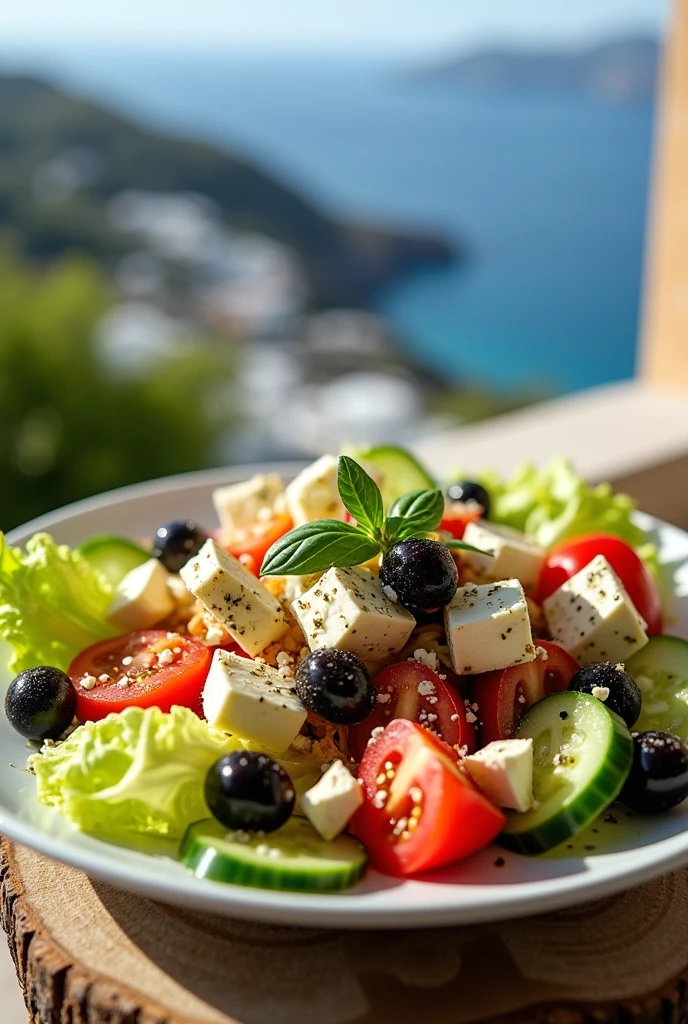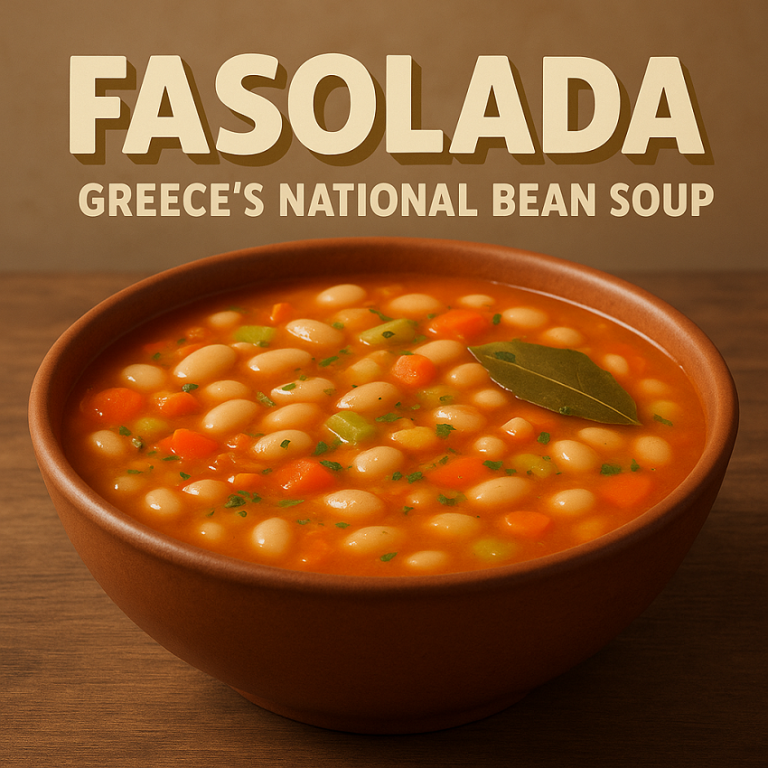
Choriatiki, often referred to as Greek salad, is a quintessential dish that represents the heart and soul of Greek cuisine. Known for its fresh, vibrant ingredients and robust flavors, this salad is a staple on tables across Greece and has found its way into the hearts of food lovers worldwide. Unlike typical salads that may rely on heavy dressings, Choriatiki celebrates the natural flavors of its components, making it a refreshing choice for any meal.
Historical Context
The origins of Choriatiki can be traced back to rural Greece, where it was traditionally prepared by farmers and villagers using the freshest ingredients available from their gardens and local markets. The word “Choriatiki” translates to “village salad,” emphasizing its rustic roots. Historically, this dish was a way to utilize seasonal produce, and it reflects the agricultural lifestyle of many Greek communities. Over the years, Choriatiki has evolved, yet it remains deeply connected to its heritage and the Mediterranean diet.
Ingredients
A traditional Choriatiki salad consists of a colorful array of fresh ingredients:
- Tomatoes: Ripe, juicy tomatoes are essential, providing sweetness and acidity. Varieties like heirloom or vine-ripened are especially favored for their rich flavor.
- Cucumbers: Crisp and refreshing, cucumbers add a necessary crunch. Some prefer to peel them for a milder taste, while others leave the skin on for added texture.
- Red Onion: Thinly sliced red onion offers a sharp, slightly sweet flavor that complements the other ingredients. Soaking the onion in cold water for a few minutes can help mellow its intensity.
- Green Bell Pepper: Sliced green bell pepper contributes a vibrant color and a slight bitterness, balancing the sweetness of the tomatoes.
- Kalamata Olives: These dark, briny olives are a staple in Greek cuisine and add a rich, savory depth to the salad.
- Feta Cheese: Crumbled or served in large blocks, feta is a defining ingredient. Its creamy texture and salty flavor elevate the dish, making it even more satisfying.
- Olive Oil: A generous drizzle of high-quality extra virgin olive oil enhances the flavors and adds a luxurious mouthfeel.
- Oregano: Dried oregano, a common herb in Greek cooking, is typically sprinkled on top for an aromatic finish.
- Lemon Juice (optional): Some variations include a squeeze of fresh lemon juice for an extra burst of acidity and brightness.
Preparation
Making Choriatiki is straightforward and quick, making it an ideal dish for busy cooks. Here’s a step-by-step guide:
- Chop the Vegetables: Begin by dicing the tomatoes and cucumbers into bite-sized pieces. Slice the red onion and green bell pepper thinly.
- Combine Ingredients: In a large mixing bowl, combine the chopped vegetables, Kalamata olives, and feta cheese. If you prefer, you can leave the feta in larger chunks for a more rustic presentation.
- Dress the Salad: Drizzle the olive oil generously over the salad. Sprinkle with dried oregano and add lemon juice if desired.
- Toss Gently: Mix the salad gently to combine all ingredients, taking care not to break the feta too much. The goal is to keep the salad looking fresh and inviting.
- Serve: Choriatiki is best served fresh, ideally at room temperature. It pairs beautifully with grilled meats, fish, or as part of a mezze platter.
Nutritional Benefits
Choriatiki is not only delicious but also packed with nutritional benefits:
- Vitamins and Minerals: The fresh vegetables provide essential vitamins A and C, potassium, and a host of antioxidants. These nutrients contribute to overall health and wellness.
- Healthy Fats: Olive oil is rich in monounsaturated fats, which are known to support heart health and reduce inflammation. It also contains antioxidants, which can help protect against various diseases.
- Protein: Feta cheese adds protein and calcium, making Choriatiki a more filling option, especially when enjoyed as a main dish.
- Low Calorie: This salad is relatively low in calories, making it an excellent choice for those looking to maintain a healthy diet without sacrificing flavor.
Variations
While the traditional version is beloved, there are numerous variations of Choriatiki across Greece and beyond. Here are a few popular adaptations:
- Additions: Some recipes include capers, artichokes, or even grains like quinoa or farro for added texture and nutritional value.
- Different Cheeses: While feta is classic, alternatives like goat cheese or even mozzarella can be used to cater to different tastes and dietary preferences.
- Herbs: Fresh herbs like parsley, dill, or mint can enhance the flavor profile and add a touch of freshness.
- Regional Twists: In some regions, you might find Choriatiki featuring seasonal vegetables like radishes or even roasted peppers, showcasing local produce.
Cultural Significance
Choriatiki is more than just a dish; it represents the essence of Greek hospitality and the Mediterranean lifestyle. It is often served at family gatherings, celebrations, and festive occasions, embodying the spirit of sharing and community. The salad’s colorful presentation and fresh flavors make it a centerpiece at any meal, inviting friends and family to come together.
Conclusion
Choriatiki is a timeless classic that captures the essence of Greek cuisine. Its simplicity allows the natural flavors of the ingredients to shine, making it a perfect dish for any occasion. Whether enjoyed as a side or a main dish, Choriatiki offers a delightful combination of taste and nutrition, promoting health and satisfaction in every bite. Embracing this vibrant salad not only connects you to Greek culture but also encourages a lifestyle rich in fresh, wholesome foods. So the next time you want to create a dish that celebrates the beauty of simplicity, look no further than Choriatiki.





